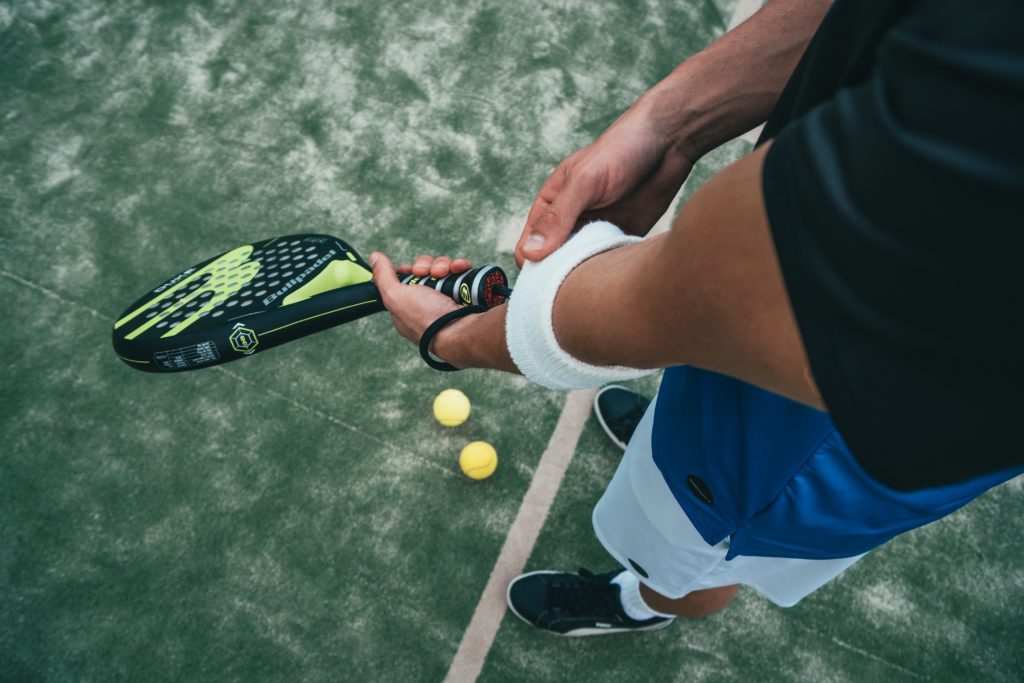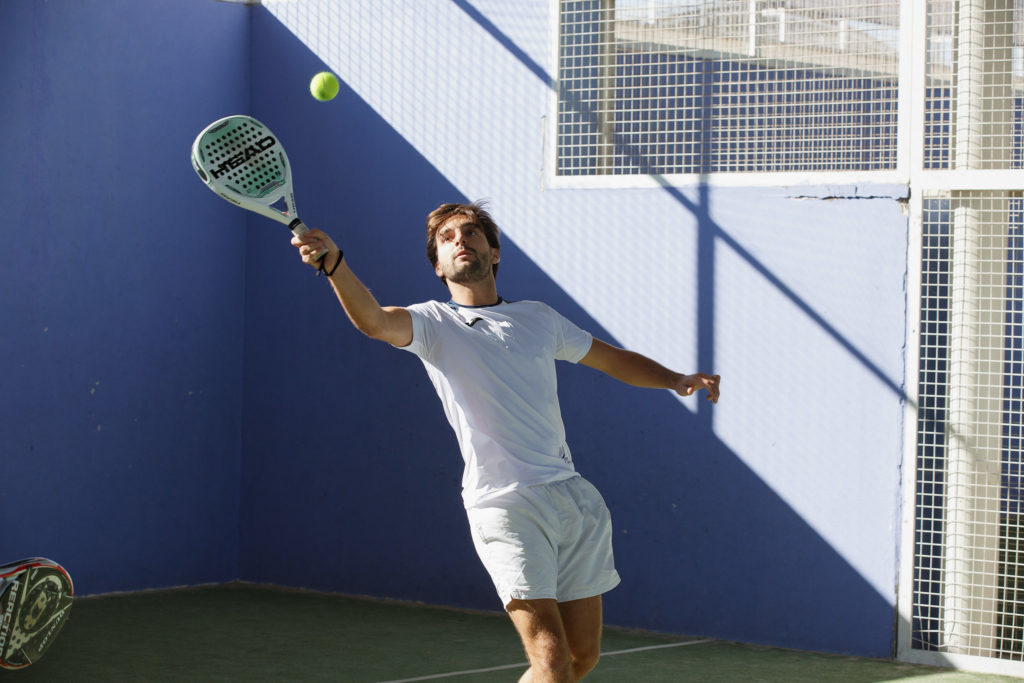Padel is a doubles-only racket sport that has been rapidly rising in popularity these past few years. Due to its similarities with tennis, it’s not uncommon for beginners to think that both sports share the same set of rules. However, this isn’t exactly true.
Although the rules of padel, as governed by the International Padel Federation (FIP – Federación Internacional Pádel), are quite similar to that of tennis, there are some differences that aspiring players should be aware of.
For starters, padel players use different equipment. A padel racket is short in size and does not contain any strings. Instead, there are holes on the surface that help with the impact and the grip during the game. Similarly, padel balls are also slightly different from tennis balls.
Padel rules saw several changes after the game’s inception, but have now been well established for years. This guide is your go-to resource for any doubts on how to play padel and its rules. After reading this post, you should be all set to go out and play!
The FIP’s Official Padel Rules
As padel’s main governing body, the FIP, is responsible for distributing the latest rules, as well as harmonizing the different styles of play used in different countries. You’ll find the latest FIP regulations below.
The Court
A padel court is approximately a fourth to a third smaller than a tennis court. It is rectangular in shape and measures 10 meters wide and 20 meters long. There is a net in the middle of the court that creates two halves that each team plays in.
The service and boundary lines are at a distance of 6.95 m from the net, generally marked by white lines. The court is additionally surrounded by glass, or other transparent material, walls as well as mesh panels that are similar to squash in their concept.
The court should ideally be roughly six to eight meters in terms of its minimum height. There should be no lights or other obstructions in this area since they might disrupt ball’s trajectory. Artificial illumination can be placed around the court, but it should be done in such a way that it doesn’t create difficulties of vision for the players, umpires, or audience.
It is important to maintain these courts regularly, although these requirements are not as intense as other grass or clay-based courts.
Net
The net divides the court into two halves. The teams stand on either side of the net and hit the ball with their padel rackets to and fro so as to earn points.
The net itself has specific requirements and rules in place when it comes to its dimensions. It should be the same length as the width of the court, that is, 10 meters. Its height should be 0.88 meters.
The net is placed on the base of the court itself instead of being hung up high like other racket sports. It’s not uncommon to find courts where there’s a gap between the metallic fence and the net post. According to the FIP’s rules, this is no longer allowed, which means such courts are no longer built to regulation.
Scoring in a Game
Scores in padel are counted in the same way as scores in tennis. This means that the score progression takes place from 0 to 15, 30, and 40. If both sides have won three points, then a “deuce” will be called, after which the first team to score twice in a row wins the game.
Overall, there are three sets in each match, with each match containing six games. In order to win the set, a team needs to have at least a 2 game advantage over the other team. If there is a tie, additional games can be added to the set until a winner emerges.
To win the match, a team needs to win two out of three sets. There can also be a golden or deciding point if both teams have scored three points each. A tie-break set can also be added if necessary.
Time schedule of the Match
How long a match lasts depends on several factors, such as the number of sets, potential fouls, breaks and timeouts, changing sides, extra time in case of a tie, and more.
In padel, times for additional breaks and activities apart from the actual match itself are fixed. For instance, five minutes are kept aside for warming up, 20 seconds between points, 90 seconds for changing sides, and 120 seconds between each set.
It is also possible that the match might have to halt due to unforeseen circumstances such as weather conditions, injuries, fouls, accidents, or more. The time is then adjusted according to the time period of the halt or suspension.
In some cases, arguments may also arise regarding a certain point that can extend the overall match further.
Position of the Players
Padel is always played in doubles. Generally, one of the players plays on the defensive side while the other plays on the offensive side. Accordingly, the players will position themselves on the right or left of their side of the court. The same goes for the players on the other side of the net.
Once a player serves the ball, the person situated diagonally in front of them makes the receive, following which the game starts.
As long as the players remain on their side of the court, it is okay for one player to keep making the receives. However, the players must rotate their position from offense to defense and vice versa according to the receiving order they decided on before the game.
Choice of Sides and Service
Based on a coin toss, one of the teams can decide which side of the court they want to play on and whether they want to serve or receive first. However, they cannot keep playing on the same side throughout the set or match; they need to switch sides after every odd-numbered game in the set or after every six points during a tie-break
If the teams forget to change sides at some point during the match, it is okay for them to do so once they come to the realization.
The Service
A padel serve marks the beginning of each point throughout the game. The server is the one who sets the ball into play so that either team can start trying to win points.
There are several important rules when it comes to serving as well. For instance, the server should stand firmly behind the line and must serve with the ball at or below their waist. They should also stay in their position while making the serve (without moving around too much) and until they finish making their serve.
They should send the ball in a diagonal direction to the receiver.
The players need to serve on an alternate basis throughout the match while following the same order throughout the set. They can choose to change this order before every new set.

Faults in Service
Umpires can call several faults during the game, either while serving or while returning the ball. For instance, if the server crosses their line, misses the ball, hits another object or person, or sends the ball out of court, then this is considered to be the server’s fault. The point will then go to the other team.
Similarly, if players happen to touch the net, send the ball out of bounds, make double hits or double bounces, hit the ball to the fences around the court, and more, then a fault can be called, with the point going to the other team.
Return of Serve
Once the server hits the ball, the other team not only needs to receive it but also needs to send it back. However, they need to wait for the ball to bounce once on their side of the court before they can receive and send it back.
There is also a receiving order that the players must decide on and follow until the end of a game or set.
Repetition in Service
Sometimes, the server might have to repeat or “let” their service in case the receiver is not prepared. In this case, the player can serve either once or twice, depending on the situation itself.
The players can also repeat a certain point in case some unforeseen circumstances arise in the middle of the game. For example, if someone walks onto the court, if someone gets injured, or if players come into contact with equipment outside the boundary of the court, then the referee may allow a point to be repeated.
Interference
There might be other interferences throughout the match that could either delay, halt or stop the game altogether for an indefinite period of time. For instance, in case of an injury or accident of one player on the team, the player might have to sit out the rest of the game.
This kind of interference could either be unexpected or deliberate. If unexpected, the player can repeat the point or service but if deliberate, the referee can award the point to the opposing team.

Ball in Play
The ball is in play as soon as the server hits it with their racket from the serving line. This starts a rally between the two teams with each team hitting the ball one after the other and keeping the ball in play.
The ball stops being in play when either of the teams scores a point, after which the cycle starts again. Both teams need to keep the ball in play after it bounces once on their side of the court.
If a ball in play hits any other part of the court (the walls, the fence, the net, or net posts) after bouncing on the receiver’s court, it will remain in play and should be returned before it bounces on the ground again. Letting it bounce for a second time on their court will cause them to lose the point to the other team.
Point Lost and Won
There are several instances in which a team can lose or win a point.
They can lose a point if they fail to serve or return the ball correctly. This could include touching the net, hitting the ball outside the court, letting the ball bounce twice on their side of the court, not letting the ball bounce once before returning it, hitting the ball that touches other equipment or players, and so on.
A team can win a point whenever the opposing team makes an error as described above or, after hitting it to the opposing side, the ball is missed by the opposition after the first in-court bounce and then gets stuck either in the fence or on the flat surface above the court walls.
Out of Court
Typically, if the ball first lands outside the padel court, then the team who hit it will lose the point.
However, in many cases, players are allowed to hit the ball from outside the court. In these cases, the point can be won if the player hits the ball after it lands in court for the first time, but before it touches the ground again.
It is important to note here that what constitutes an authorized out-of-court play depends on the structure of the court itself and if the court meets the requirements of this kind of play.
Change of Balls
There can sometimes be a couple or more ball changes that can take place throughout the match. While this is not always the case, it can still occur often but must be done only at certain points of the match.
For example, the teams can change the ball in between each set, after a certain odd number of games have passed or if there is a defect in the ball itself.
If this rule is set in place, then it should be carried out at the appropriate time. It is important to avoid changing balls before a tie-break begins.
Etiquette and norms
Apart from the general rules of the sport itself, it is important for the players and other parties to follow proper etiquette, such as wearing the proper attire, bringing the right kind of equipment, being punctual for the matches, and for those who play competitively; providing the necessary documentation whenever required.
They must also treat the other players, teams, referees, audiences, and anyone else engaged with the game with respect. This kind of respect should also extend to the equipment and the court itself. Finally, they must remain within the match area until the match is over.
If such codes of conduct are broken, the consequences can range from declaring a fault, awarding points to the other team, giving a warning, or even suspending the player.
Ready to Play Some Padel?
No one expects you to know every single rule and court requirement from memory, but giving them a once-over before a game is a great way to ensure that the game is being played fairly. You can also keep this post bookmarked and use it to settle any disputes that may arise while you play.
Now you know everything you need to play padel, all that’s left is to get a racket and ball, head to your nearest club to book a court and find some friends or family to play with!



8 Comments
“Everything is very open with a clear explanation of the challenges. It was definitely informative. Your website is extremely helpful. Thank you for sharing!
Very nice write-up. I definitely appreciate this site. Thanks!
Thank you for the feedback.
Hello, you used to write great, but the last several posts have been kinda boringK I miss your tremendous writings. Past several posts are just a little out of track! come on!
Thank you for your feedback. Well noted.
I think this is among the most significant information for me. And i’m satisfied studying your article. But wanna remark on some normal things, The web site taste is perfect, the articles is in reality excellent : D. Just right activity, cheers
Very clear internet site, thanks for this post.
Thank you. Great to hear it was useful.